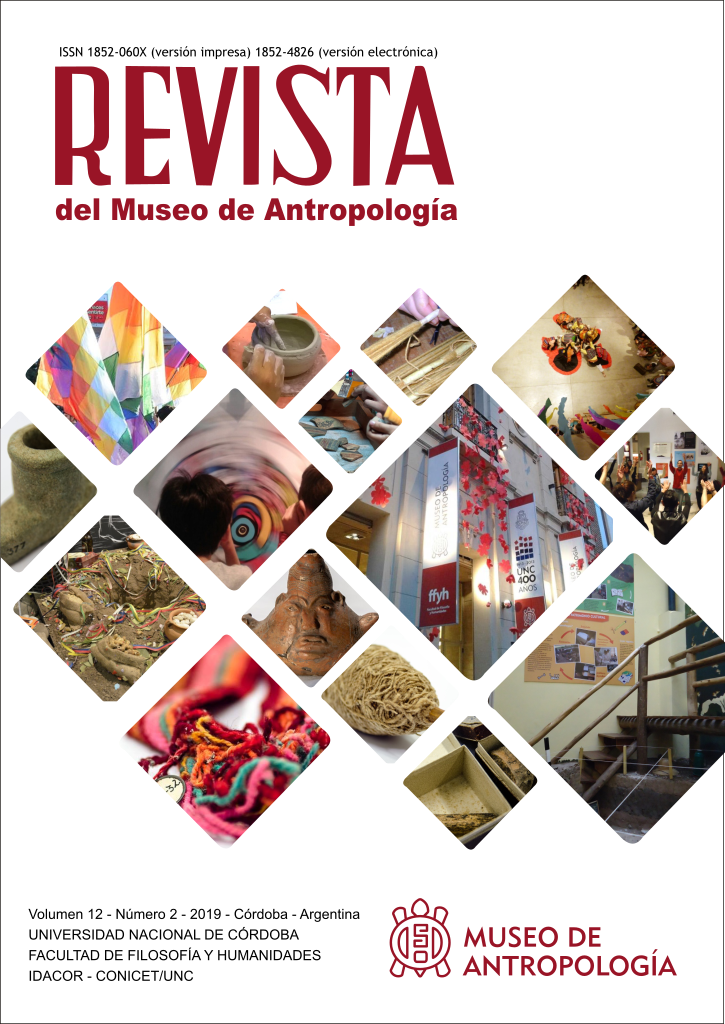Deprivation of liberty does not mean deprivation of identity. Educational experiences in prison spaces. Museo Histórico Nacional, Chile
DOI:
https://doi.org/10.31048/1852.4826.v12.n2.22308Keywords:
Museum, Deprivation of liberty, Heritage, Education.Abstract
Many are the services that the museums can offer to its visitors, however, when the accessibility to this places it’s restricted to those people who for different reasons are confined in different places as, children’s home, nursing home and especially the penitentiary, the actions of this cultural institutions is limited, not being able to response to a basic right, the cultural identity by the access to the cultural heritage. It is therefore that the Education Department of the National Historic Museum, looks to promote the respect to the cultural diversity of our country and give to the communities, without exclusion of some of them: Ethnic, social, religious, etc., knowledge of the history of Chile and the custody of the cultural heritage in attention of its mandateby the activity “The objects of my history” which is part of the program “The Museum outside the Museum”.Downloads
References
Alonso Fernández, Luis (2001). Museología y museografía. Barcelona: Ediciones del Serbal.
Andrade, Pablo; Mellado, Leonardo; Rueda, Hugo; Villar, Gabriela (2018) El Museo Mestizo, Fundamentación Museológica y Disciplinar para el Cambio de Guion. Museo Histórico Nacional.
Bulnes, F., Collarte, C., Fruhling, H., Mardones, C., Ramm, A., Roblero, L., Santibáñez, Sanhueza, G., Singer., M., Tello, C., & Vial, P. (2017). Sistema carcelario en Chile: propuestas para avanzar hacia una mayor efectividad y re inserción. 2017, de Centro de Políticas Públicas UC Sitio web: http://politicaspublicas.uc.cl/wp-content/uploads/2017/05/Art%C3%ADculo-Sistema-carcelario-en-Chile.pdf
Constitución Política de la República de Chile (1980). Texto actualizado a mayo de 2017. HCD.
Decreto con fuerza de ley N° 5.200, de 1929, del Ministerio de Educación Pública. https://www.leychile.cl/Navegar?idNorma=129136
Garcés, H., De Rosas, N., Gacitúa, D., Pedraza, M., & Infante, I. (04,2016). Educación para la libertad. Propuesta de mejoramiento y pertinencia de los procesos pedagógicos para establecimientos educacionales en contextos de encierro. Junio 20, 2017, de Coordinación Nacional de Educación de Personas Jóvenes y Adultas. División de Educación General. Sitio web: http://epja.mineduc.cl/wp-content/uploads/sites/43/2016/07/Educaci%C3%B3n-para-la-libertad-2016-2018-Final-042016.pdf
Garcés, Mario (2001) “Memorias de la Dictadura en La Legua”. ECO Educación y Comunicaciones, Santiago.
Larraín, Jorge (2003). El concepto de identidad. En Revista Famecos núm. 21.
Marsal, D., & Equipo, (2014). Estudios de metodologías aplicadas por el área educativa Museo Histórico Nacional. Licitación 49-17LE14.
Naciones Unidas, Asamblea General “Principios básicos para el tratamiento de los reclusos”, principio N°6, en su resolución 45/111, (14 de diciembre de 1990), disponible en http://www.ohchr.org/SP/ProfessionalInterest/Pages/BasicPrinciplesTreatmentOfPrisoners.aspx
Vidal, T& Ruiz, M. (2014). Arte, cultura y cárcel. Prácticas artísticas y culturales en contextos penitenciarios. 2017, de Cultura Sin Mesura Sitio web: https://issuu.com/culturasinmesura/docs/arte_cultura_y_carcel
Downloads
Published
Issue
Section
License
Those authors who have publications with this Journalaccept the following terms:
a. Authors will retain their copyrights and guarantee the journal the right of first publication of their work, which will be simultaneously subject to the Creative Commons Attribution License (Licencia de reconocimiento de Creative Commons) that allows third parties to share the work as long as its author and his first publication in this journal.
b. Authors may adopt other non-exclusive licensing agreements for the distribution of the version of the published work (eg, deposit it in an institutional electronic file or publish it in a monographic volume) provided that the initial publication in this journal is indicated.
c. Authors are allowed and recommended to disseminate their work on the Internet (eg in institutional telematic archives or on their website) before and during the submission process, which can lead to interesting exchanges and increase citations of the published work. (See The Effect of Open Access - El efecto del acceso abierto)












